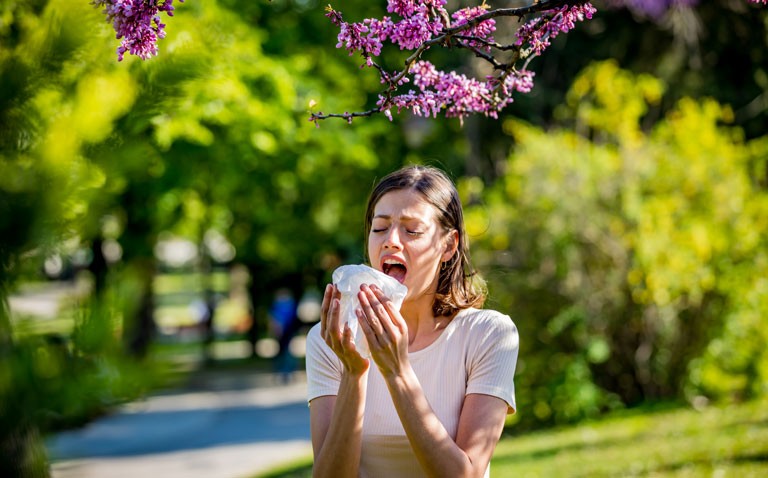Allergic rhinitis symptoms worsened for nearly 40% of patients during the pandemic possibly due to increased exposure to indoor allergens
Allergic rhinitis (AR) symptoms were worse for some patients during the COVID-19 lockdown and this was most likely due to increased exposure to indoor allergens according to a study by researchers from Fundacion Santa Fe de Bogotá, Columbia.
Allergic rhinitis is characterised by one or more symptoms, including sneezing, itching, nasal congestion and rhinorrhoea and affects 15 to 25% of the population. Allergy avoidance is an effective management strategy for those with seasonal allergic rhinitis and hayfever sufferers are usually symptom-free outside the pollen season. In contrast, allergy avoidance for individuals with house dust mite-sensitive AR is more difficult given that the mites are present in the home. In fact, an Italian study has shown that the first COVID-19 lockdown ordered by the Italian government, negatively influenced the clinical history of patients with dust mite allergy. In terms of management, allergen-specific immunotherapy (allergen-SIT) is the only known treatment able to alter the natural course of allergic rhinitis.
But to what extent did the COVID-19 national lockdown and the abrupt cessation of SIT impact on symptom control in patients with AR was the subject of the present study by the Columbian researchers. They performed an observational study between March and May 2020 to assess any changes in AR symptoms in patients with a clinical diagnosis of AR and who were treated with monthly depot SIT injections for at least 6 months. The team used a visual analogue scale (VAS) from 0 (no symptoms) to 10 (severe symptoms) to assess the main AR symptoms including nasal obstruction, pruritus, rhinorrhoea and ocular symptoms. In addition, trained researchers used a sociodemographic questionnaire to collect further information on participants, for instance, age, education level, income, floor material in the household, number of household members etc.
Allergic rhinitis and symptom control
A total of 318 individuals with a mean age of 18.9 years (55.1% female) were included in the analysis. The median number of immunotherapy doses before the lockdown was 11 with a median of 3 doses missed during isolation.
Overall, 38.4% reported that their symptoms worsened during the lockdown period and this was apparent for all AR symptoms. For example, for nasal obstruction, 69.6% stated that their symptoms worsened compared to 30.4% who reported that their symptoms improved or remained the same. A pre-post mean difference in the VAS of 0.5 was found for nasal obstruction (p = 0.01) and pruritus (p < 0.001), a 0.7 difference for rhinorrhoea (p < 0.001) and 0.8 for ocular symptoms (p < 0.001).
Factors associated with a reduction in the final VAS scores were the presence of dogs and cats in the house, atopic dermatitis, lower levels of education and a lower number of immunotherapy doses prior to the lockdown.
The authors concluded that the worsening of AR symptoms during the COVID-19 lockdown was likely to be attributable to a higher exposure to indoor allergens and the interruption of immunotherapy, highlighting the importance of environmental factors in the pathogenesis of the disease.
Citation
Pérez-Herrera LC et al. Impact of the COVID‐19 national lockdown in the allergic rhinitis symptoms in patients treated with immunotherapy at two allergy referral centers in Bogotá, Colombia Laryngoscope Investig. Otolaryngol 2022










